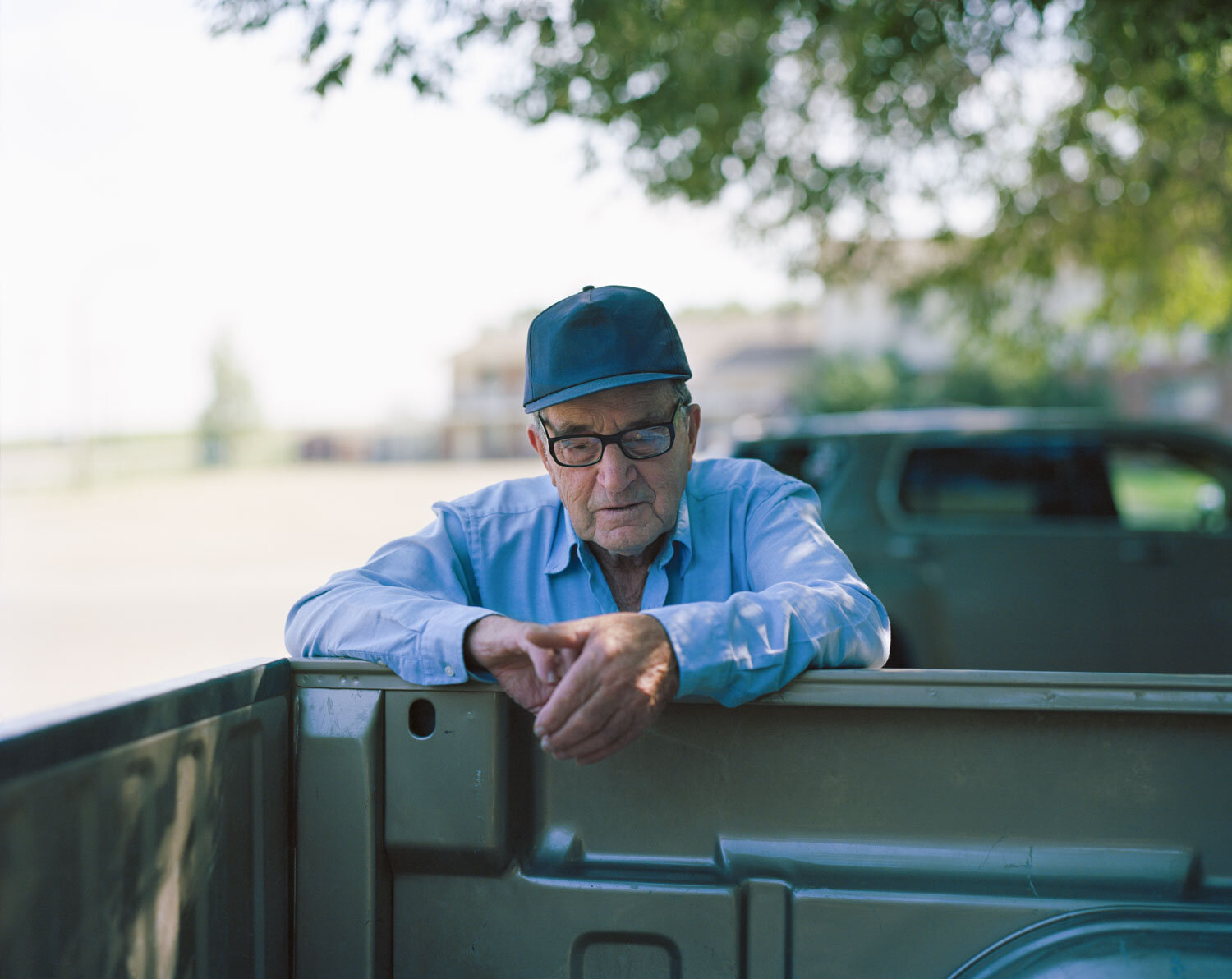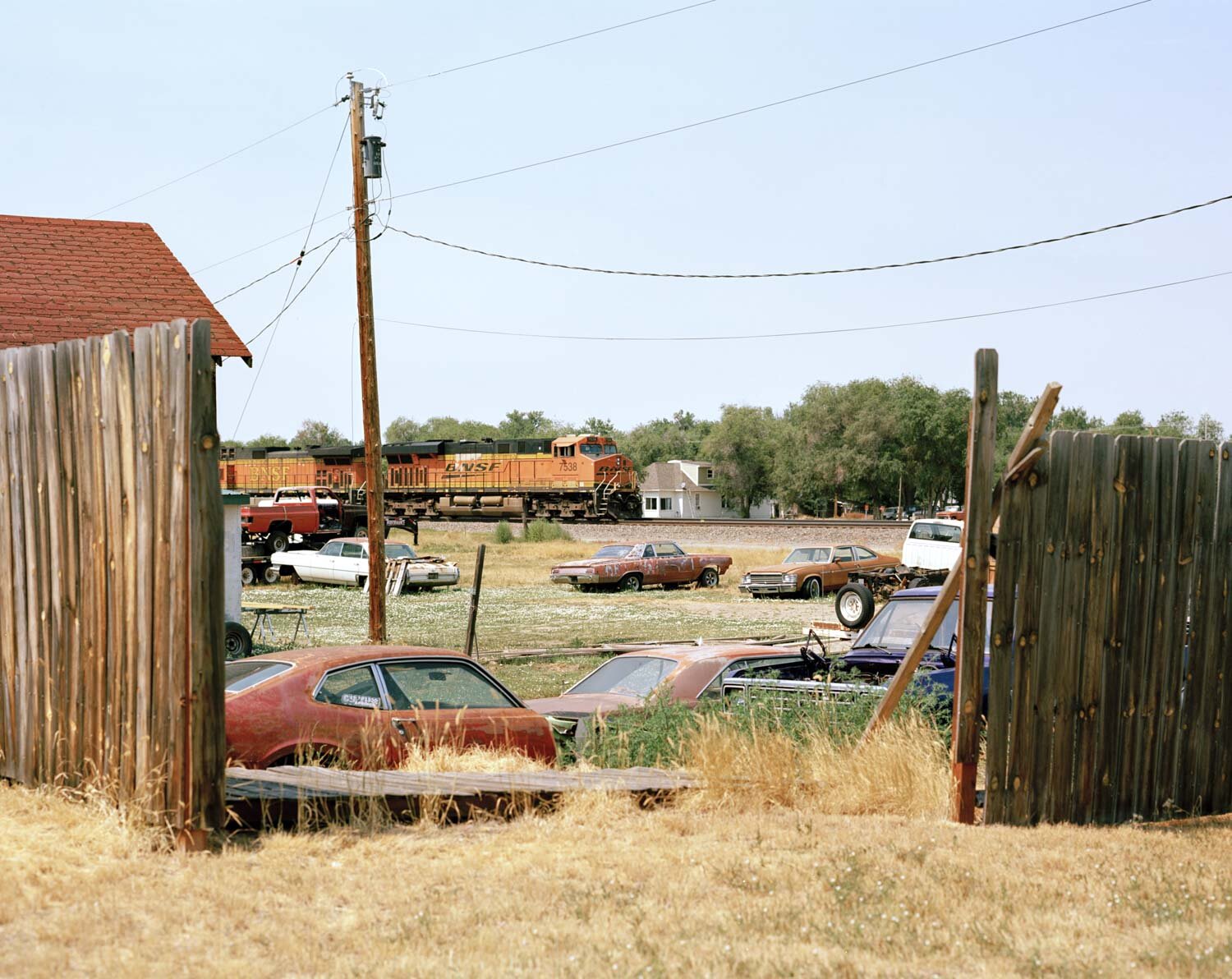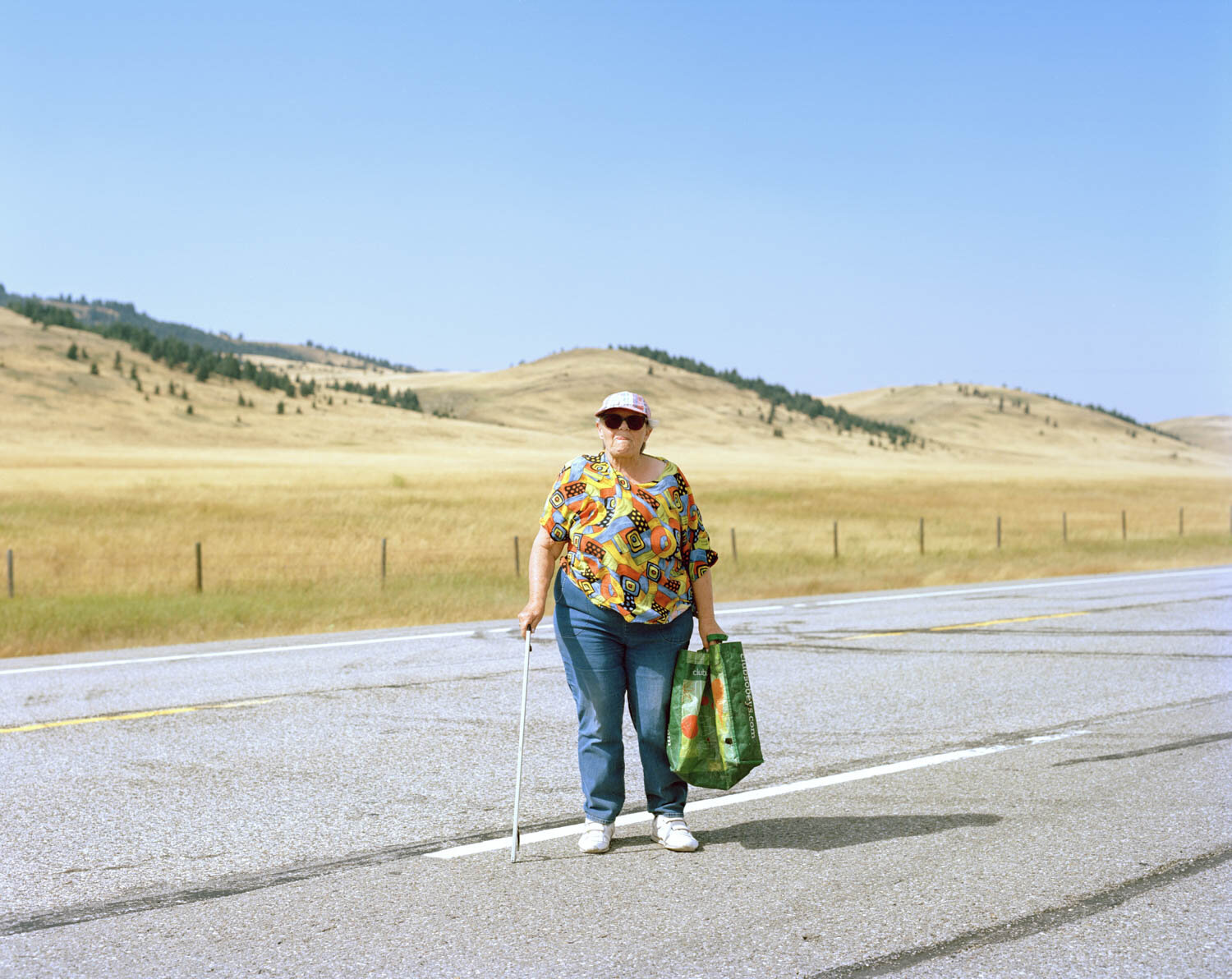Kyler Zeleny - Crown Ditch and the Prairie Castle
Kyler Zeleny is a Canadian photographer and researcher based in Edmonton, Alberta. His most recent photobook, “Crown Ditch and the Prairie Castle” (The Velvet Cell, 2020), takes place over four years and travels across 15,000 km of North America’s prairie lands. As rural communities are being forced to grapple with uncertain futures clouded by mass urbanisation, the moments that Zeleny photographs offer a portrait of what he calls “a beast upon itself”; an understudied region where there is a unique meeting of landscape, industry, and most importantly, people who are a resilient breed created by generational lessons in fortitude and fortuned circumstance.
It’s late August when we first talk with Kyler about his project. He’s been travelling in between Alberta and British Columbia, and now, in the quiet of his parent’s farm, he sits on a stool in their garage, typing his thoughts on his laptop. Kyler tells us, “It’s a cool day on the prairies, overcast and cold, the mosquitos have gone but the wasps are still out in full force. I’m imagining an early Winter.”
Continue below for the full interview!
- Alexa Fahlman
You’ve published quite a few photo books, despite the increased digitization of culture, what is it about print that makes the process feel worthwhile?
The more we move to a digital world the more important physical objects become. I am keen on sharing my work through books and so I conceptualize my long-term projects early on as book projects, they could be shown in gallery spaces but for me, their primary resting place is in a book that can live on people’s shelves wherever they are.
The photobook is the medium that, more than others, allows us to express our ideas clearly, of course, we are bound by certain parameters within it, cost, size, etc. but we can decide sequence and intention. It also allows for a number of creative outputs than sending images into the ether of the web or placing them on location-based gallery walls for a short period of time. Because of this I think a lot of photographers are now embracing the medium of the photobook which is good and bad, good for the practice of photography bad for selling books as competition is tough.
Let's talk about your latest publication "Crown Ditch and the Prairie Castle", what was the initial inspiration for your project?
My first book—Out West (2014)—was about documenting towns smaller than 1,000 inhabitants in Western Canada (British Columbia, Alberta, Saskatchewan, and Manitoba). Out West focused only on the towns themselves and their aging structures and not the people or landscapes that make these communities what they are. So Crown Ditch & The Prairie Castle became the second chapter of a prairie trilogy where I looked at rural communities of 10,000 or less and only on the prairies. This project was really about trying to have a better understanding about who are the people calling the prairies home, what do they think, want and do. I’m not working on the third and final chapter that looks at my small-town comprehensively and uses community archives, found objects and my own photography to make an alternative history of a familiar place.
You mentioned that the Prairies is a particularly understudied region of North America, especially the Canadian Prairies – for those of the readers who are unfamiliar with this region, can you give a brief run-down of the area? If you could describe the Prairies in three words, what would they be?
We could go with ‘Big Sky Country’ or ‘Wide Open Space’
The trope of big sky as a psychological and spiritual boundary is a common feature when describing the prairie landscape. The prairies are home to the largest skies and the longest horizons. It is these two very simple elements that make the prairies what they are, a giant sky pressing down on an expanding and flat horizon. To some it will feel like an unfinished landscape and to others it will feel like beauty in the simplest terms.
With that being said, what was it about the Prairies that made you think "this is something I need to photograph"?
It's a vast region and yet there are very few photographers that are documenting it. My journey with photographing on the prairies began almost ten years ago and was a way for me to understand my home region. It has evolved from that to be about documenting a region that receives very little visual coverage. This is a problem for the prairies but is also a Canadian problem in general. It is an identity issue. We know what the American West is and the American South, but we have a hard time discussing what makes the Canadian prairies unique and different from other regions of North America.
For centuries, the Prairies were the domain of Indigenous peoples, did you feel that historical presence while travelling through the region?
That’s a tough but good question. Thomas King talks about the concept of the Dead Indian. For King, the Dead Indian is rarely actually dead but exists as a stereotypical Indigenous individual who conforms to well-worn Western stereotypes (war bonnets, beaded shits, etc.). The colonial-settler culture that exists on the prairies often thinks about indigenous individuals this way (as opposed to Living or Legal Indians that King also discusses) so their presence is sometimes felt or acknowledged but often in very coded and limited ways.
I think in a number of ways; rural folk share a closer relationship to the land than you would find in urban spaces. That is of course a generalization but exposure to open land and land-based industries suggest a stronger working understanding and an affinity to the land. I’m not sure if prairie dweller is overly cognizant of this and whether this is directly influenced by indigenous knowledge or culture.
Have Indigenous cultures of the Prairies been preserved at all?
This is a question better suited for Indigenous experts, I have read a fair amount on the subject (one of my areas of teaching is Critical Canadian Studies), but I would still say I’m a far way from knowing the answer to that and other questions. There are some very knowledgeable Elders in indigenous communities that would hold this knowledge.
I can, however, speak about this from a photographic perspective. Historically, Indigenous populations have been photographed largely in stereotypical ways, often very false ways as discussed at length in The Imaginary Indian by Daniel Francis. There have been a few contemporary photographers who have photographed indigenous communities and individuals but no accounts of Indigenous photographers working on long-term projects that document their own communities on the Canadian Prairies. I myself have stayed away from photographing communities I feel I do not have the right or authority to capture and although I’ve included photos of Indigenous individuals in the book I’ve been highly aware of how and when they are being represented.
Did you have a favourite moment throughout your shooting for the project?
Not sure any one moment sticks out, it’s been a lot of work and every day being able to produce images on the region has felt like a privilege. Sadly, this is a region where very little happens and the status quo often dominates the culture of the region. There are a number of moments that definitely stick out, like the time a small-town business owner invited me in for beers and then let us stay at his house and cooked breakfast in the morning, or the countless occasions these folk shared their ideas and thoughts on how they live and the place they call home.
How has this experience shaped you both personally, and professionally as a photographer?
It has helped solidify my interest in recording the region. It has also helped me understand my home region and it has sustained me artistically by gifting me a topic I care very deeply about.
And to finish off, what are 5 things you think everyone should do if they visit the Prairies?
Love this question!
1. Visit a small town with a large and whimsical monument
2. Witness a prairie sunset
3. Chat up a local in a small-town bar
4. Go to Torrington to see the Gopher Diorama Museum (entry is only $2)
5. Drive to the West edge of the prairies, where the mountains meet the plains and flip-off the mountains























